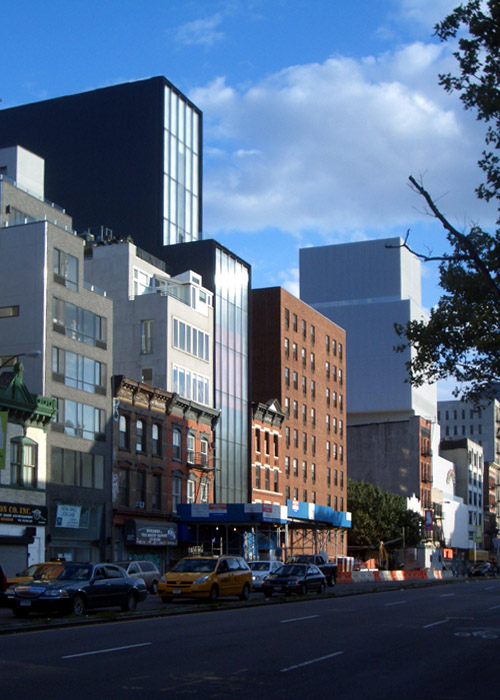
The Sperone Westwater Gallery, designed Foster + Partners, is nearing completion about a block north of the New Museum. This piece continues the transformation of the Bowery, from Cooper Union down to Chinatown. In the ten or eleven years since I stayed at a hostel on the Bowery the street has seen numerous new buildings as well as restaurants and shops, displacing the old flophouses and mainstays like CBGB's.
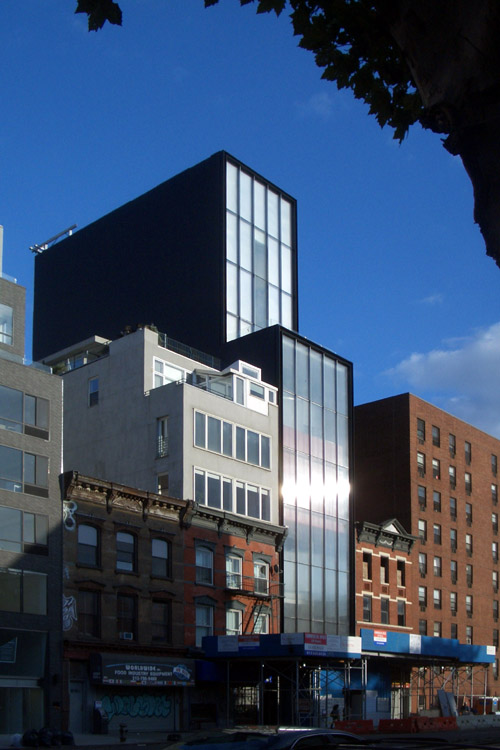
I always liked to think of the Bowery as un-gentrifiable, a zone immune to the changes in neighborhing SoHo, NoHo, the Lower East Side, and the East Village. Of course I was wrong, but a nine-story building with a bright red elevator on its facade is probably the last thing I would have expected from the alternative scenario.
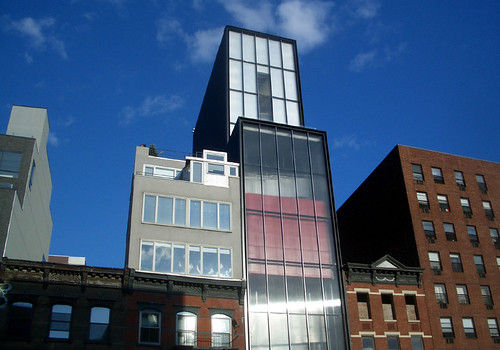
Norman Foster's design is the antithesis of the New Museum, which made the Bowery cool for institutions with money to spend on buildings by name-brand architects. SANAA's stacked and shifted white boxes respond to the zoning envelope without making that legal device explicit; Foster's design rises to the maximum street wall and then sets back once. Done.
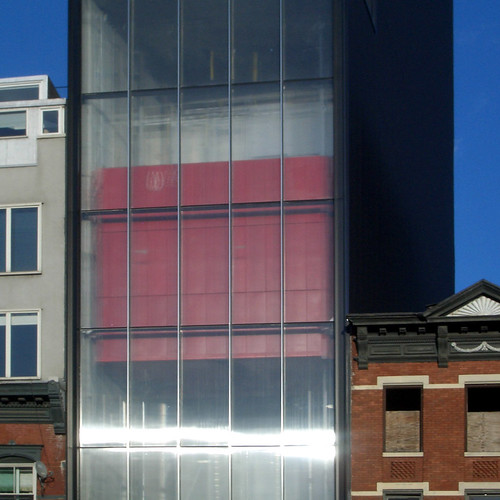
Granted, the 20-foot-wide lot doesn't give much room for play, so Foster focuses on the skins. Facing the Bowery on the first five floors is an all-glass wall with laminations that allow light and views, but the latter are indistinct, yet not so much that the elevator's workings aren't apparent. One effect of the glass, which lies somewhere between transparent and translucent, is the band of light visible in these photos. It must be an unwritten code that new buildings must have a surface that blinds passersby!
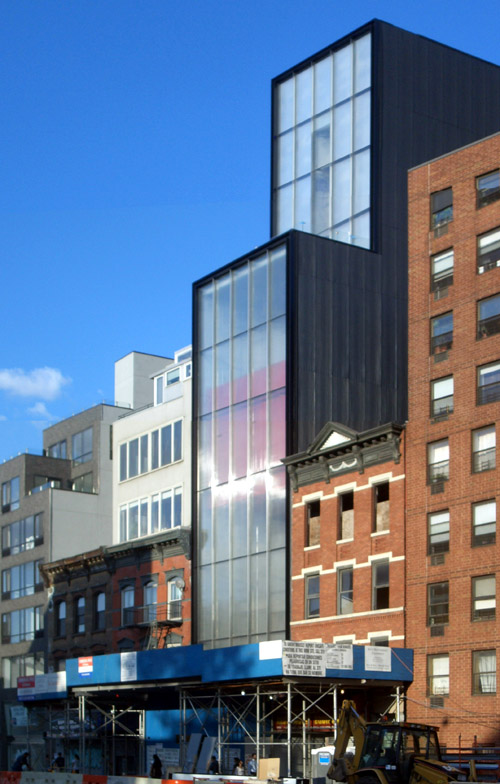
The side walls, facing north and south, are blanketed with black corrugated metal, the panels mimicking -- but oddly not following exactly, in size or spacing -- the glass on the front. The rear facade is similar to the top of the front, with a zipper of clear glass running vertically between what looked to be solid panels (not translucent like the front). Foster's design certainly has a strong presence on the Bowery, but its industrial elegance will pack more of a wallop at night when the glass box is illuminated and the red box glows.

No comments:
Post a Comment